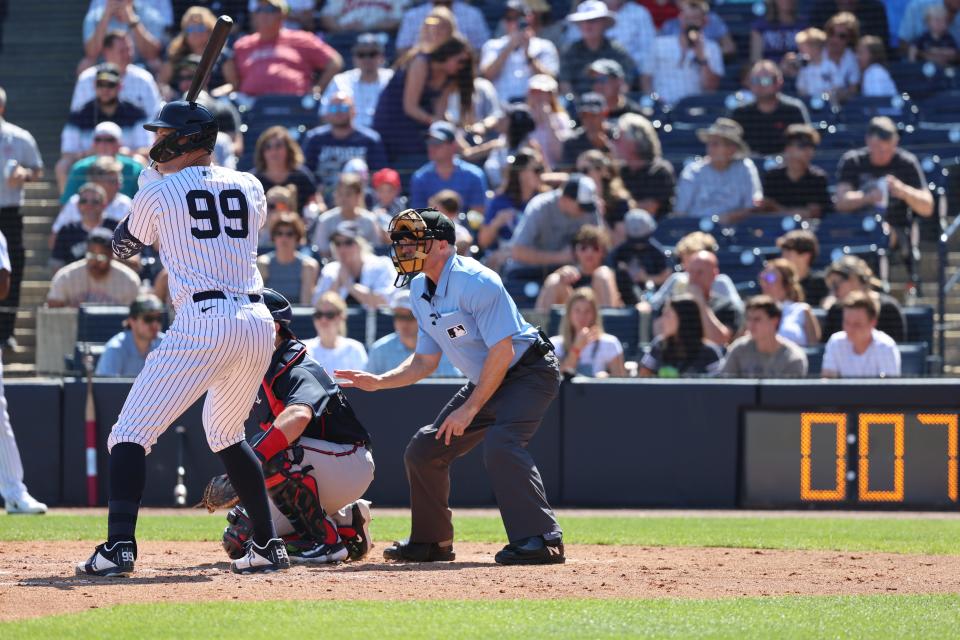MLB's new pitch clock looks to limit dead time during games
The average time for a Major League Baseball game last season was 3 hours, 6 minutes. That was down from the all-time high of 3:11 in 2021, but it still reinforced the perception that today's MLB games tend to have long stretches of inactivity.
To speed up the pace of the game, MLB wants to cut down on the number of times pitchers and batters are allowed to stop play.
With pitch clocks implemented throughout the minor leagues last season, the average game time was cut by an average of 25 minutes. And early this spring training, games have been an average of 20 minutes shorter.
Of course, there's always a learning curve. San Diego Padres third baseman Manny Machado became the first batter to have an automatic strike called on him. And a game between the Boston Red Sox and Atlanta Braves ended in a tie when the game's final batter was called out on an automatic strike.

How the pitch clock works
There is a 30-second timer between batters and a time limit between pitches. After receiving the ball from the catcher or umpire, pitchers are required to begin their motion within 15 seconds with the bases empty or within 20 seconds with runners on base. If they don't, they're charged with an automatic ball.
In addition, pitchers are permitted only two "disengagements" – stepping off the rubber or throwing over to first base – per plate appearance.
Hitters also share the responsibility to keep the game moving. They must be in the batter's box and ready for the pitch by the time the clock reaches 8 seconds. If not, they're charged with an automatic strike. A batter can call time out only once per plate appearance.
MLB's other new rules for 2023
Shift ban: At the start of each pitch, teams must have at least two infielders on either side of second base, with all four positioned on the infield dirt. Infielders may not switch positions unless there is a substitution.
Larger bases: The bases are now 18 inches square (previously 15 inches). That decreases the distance between first, second and third base by 4.5 inches. (Home plate – which stays the same size – to first base is 3 inches shorter.)
Pickoff limits: Pitchers are limited to a maximum of two pickoff attempts per plate appearance. If a pitcher attempts a third pickoff throw and doesn't get the runner out, it's an automatic balk and all runners move up one base.
This article originally appeared on USA TODAY: MLB's pitch clock rule designed to keep games moving
